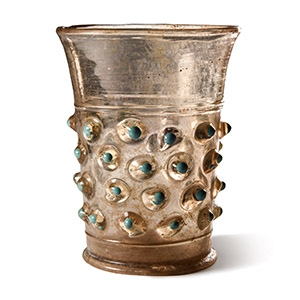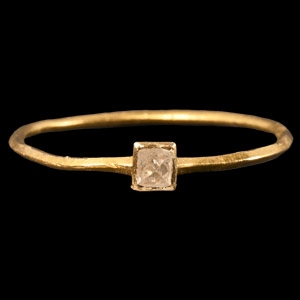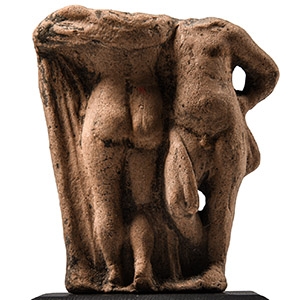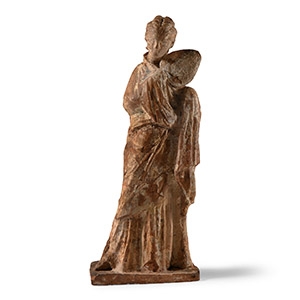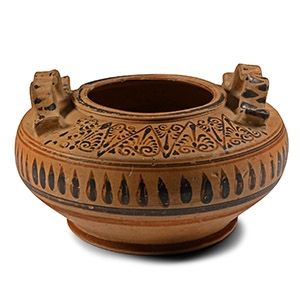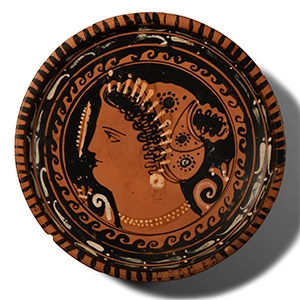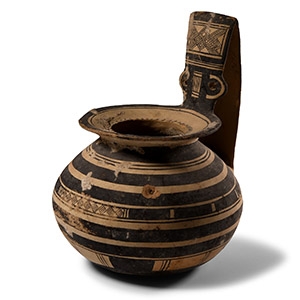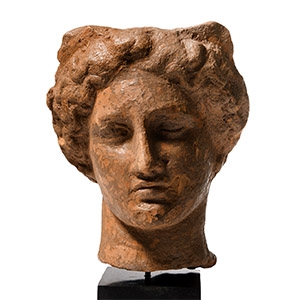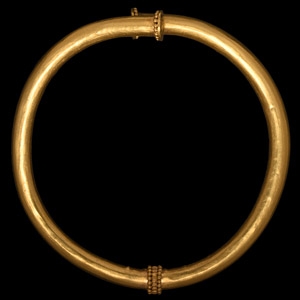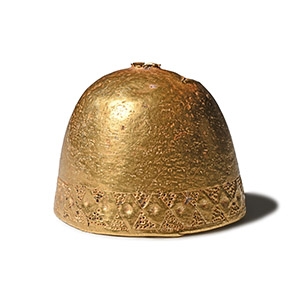Home > Auctions > 5 - 9 December 2023
Ancient Art, Antiquities, Natural History & Coins
Auction Highlights:
4TH CENTURY B.C.
Ex collection Woodyat, Rome, Italy, 1912.
with Vente Genève, 24 & 25 June 1960.
Private European collection.
Accompanied by an academic report by Dr Raffaele D’Amato.
This lot has been checked against the Interpol Database of stolen works of art and is accompanied by search certificate number no.11581-199028.
Cf. The British Museum, museum number 1867,0508.1339 'Pottery: red-figured hydria (water jar)', for a similar type of vessel with a comparable volute panel to the rear, in Smith, A.N., Pryce, F.N., CVA British Museum 2 / Corpus Vasorum Antiquorum: Great Britain 2, British Museum 2, London, 1926, pl.8, 15; cf. The Metropolitan Museum, New York, accession number 07.128.1, for a similar vessel type, in Von Bothmer, D., Guide to the Collections: Greek and Roman Art, New York, 1964, p.24, fig.32; Trendall, A.D. & Cambitoglou, A., The Red-Figured Vases of Apulia, vol.1, Oxford, 1978, pl.XXX; Robinson, E.G.D., Carpenter, T., Lynch K.M., The Italic People of Ancient Apulia: New Evidence from Pottery for Workshops, Markets, and Customs, Cambridge, 2014, figs.4.5; for the represented topic see Patten, A.E., Addressing the Other: The Amazon in Greek Art, University Honors Theses, Portland, Paper 24, 2013, fig.2, folio VIII.
The mythological topic of this hydria is fascinating, representing a fight between Amazons and Greek or Trojan heroes (suggested by the central cavalryman wearing a Phrygian cap). During this period, Amazons were no longer represented as Persian or Scythian warriors, as in Attic red-figure ceramics, but depicted as athletic parthenoi and wearing chitons. Rather than oriental costume and armour, the Amazons wear a short exomis with a bare shoulder and breast (Patten, 2013, PI.VI, I, VI,2, 2 and 3).
Ex French Sorbonne archaeology professor (deceased); 1960s-2000s.
Accompanied by an original thermoluminescence analysis report no.QED2323/FG-0201 from the QED Laboratory, Marseille, France.
Cf. Higgins, R.A., Greek Terracottas, London, 1967, pl. 55C, for a similar terracotta in Myrina style, representing Eros and Psyche; pl.52B, for a similar head of Aphrodite.
Many of the Smyrna and Myrina figures are feminine, the heads modelled in late Hellenistic style. The bodies are often either draped in Tanagra-style robes, or represented as figures of Aphrodite, draped, semi-nude or naked. The association with Triton is linked with the Greek myth of Aphrodite born from sea foam.
with Galerie vom Parkberg, Hamburg, Germany, 1997.
Acquired Gerhard Hirsch, Munich, Germany, 24-28 September 2018, lot 677.
Accompanied by an original thermoluminescence report from Ralf Kotalla, no.190131, dated 10 March 1997.
Accompanied by a copy of the Gerhard Hirsch invoice and export licence.
Ex French Sorbonne archaeology professor (deceased); 1960s-2000s.
Cf. for similar but not identical couple in terracotta in Sporn, K., ‘Hellenistic Terracotta Figurines from Syme Viannou’ in Πεπραγμένα του IA΄ Διεθνούς Κρητολογικού Συνεδρίου, Ρέθυμνον, 20-27 Οκτωβρίου 2011, Τόμος Α 2.2 Τμήμα Αρχαιολογικό. Τάφοι – Ταφικές Πρακτικές – Φυσική Ανθρωπολογία. Νέες ανασκαφικές έρευνες. Τεχνολογία – Τέχνη – Εικονογραφία, Rethymnon, 2018, pp.125-136, fig.6.
The couple represented here could be a depiction of Eros and Psyche. Terracotta figurines of these divinities are quite common in Hellenistic Asia Minor, the Black Sea, the Near East, with examples from Amisos, Ephesos, Priene and possibly Smyrna, but also in the Cyrenaica and in Sicily. In mainland Greece there are a few examples of related types from Beroia and Pella. However, not all the figurines of couples depict Eros and Psyche. Different types are known from other areas of Greece in the late Hellenistic period, on Crete there are close parallels from the Idaean cave.
Private collection Adry de Carbuccia, Sainte-Maxime, France, acquired prior to 1975.
with Eurl Eve, Paris, 11 December 2013, lot 30.
Accompanied by a copy of an Art Loss Register certificate number S00085753, dated 26 March 2014.
Accompanied by a copy of a French cultural passport no.1537836.
Accompanied by a copy of an original thermoluminescence analysis report no.QED1340/FG-0404 from QED Laboratoire.
Accompanied by a copy of the relevant Eurl Eve catalogue pages.
Acquired from Charles Ede, London, 1986.
with Christie's London, 27 October 2004, lot 451.
with Christie ́s London, 20 April 2005, lot 314.
Accompanied by a copy of an Art Loss Register certificate number S00085809, dated 27 March 2014.
Accompanied by copies of the relevant Christie's catalogue pages.
Acquired by the vendor's father in the 1950s or before; thence by descent 2003.
From the Steel family collection, 1950s-late 1990s.
Cf. similar in the collection of the British Museum under accession no.1912,1220.22, with polychrome decoration.
Private European collection.
with Genève Enchères, 12th December 2017, lot 861.
This lot has been checked against the Interpol Database of stolen works of art and is accompanied by search certificate no.11612-199036.
Cf. The British Museum, museum numbers: 1926,0410.7 'Head of terracotta female figure, wearing himation drawn up over head' and 1870,0105.2 'Terracotta female head wearing earrings', for stylistically similar examples.
Ex private South German collection, 1980s.
with Christie's, New York, 8 June 2012, lot 86.
Accompanied by an academic report by Dr Raffaele D’Amato.
Accompanied by copies of the relevant Christie's pages.
This lot has been checked against the Interpol Database of stolen works of art and is accompanied by search certificate number no.11578-198980.
Cf. Reeder, Ellen D., Hellenistic Art in the Walters Art Gallery, Baltimore, 1988, p.125, no.130, for similar examples and a general discussion of type; A Passion for Antiquities, Ancient Art from the collection of Barbera and Lawrence Fleischman, The J. Paul Getty Museum, Malibu, 1994, pp.77-78, no.31D; and The Search for Alexander, exhibition catalogue, 1980, p.167, no.130; the Metropolitan Museum of Art, accession number 1972.118.88, for a group containing a silver strainer with similar looped handle and bird-head terminal; a similar specimen in the Walters Art Museum, accession number 57.910; a similar example in shape and quality can be seen in the ‘Tomb of the Prince’, in Pella, cf. Touratsoglou, I., Macedonia, History, Monuments, Museums, Athens, 1996, p.240, fig.312.
Elaborate silver strainers, such as this present example, were used at symposia and festive occasions for the purpose of preventing the dregs of wine from entering the wine cup. This and other related silver utensils became popular in the later 4th and 3rd century B.C. These highly decorated wine strainers were fitted with dual handles forming loops in the shape of twisting animals, here a swan. Usually they took the form of a shallow dish complete with four rings of perforations in the centre in order to drain the wine. Strainers of this type were used to separate out sediments which could be found in the thick Greek wine. Examples similar to this one have been found in royal tombs in northern Greece, as well as the tomb of a monarch in Sudan.
Previously in the Mansees collection; formed 1950s-early 1990s.
From a large American collection formed in Chicago, Illinois, USA, in 1995.
Ex European collection.
Accompanied by an academic report by Dr Raffaele D’Amato.
This lot has been checked against the Interpol Database of stolen works of art and is accompanied by a search certificate no.11731-200431.
Cf. Marshall, F.H., Catalogue of the Finger Rings, Greek, Etruscan and Roman, in the Department of Antiquities, British Museum, London, 1907, no.2714; Robinson, D.M., Williams, D., ‘Unpublished Greek Gold Jewelry and Gems’ in American Journal of Archaeology, Vol. 57, No.1 (Jan, 1953), pp.5-19, figs.29, 31; Ogden, J., Greek Gold, Jewelry of the classical world, London, 1994; Despini, E., Greek Art, Ancient Gold Jewellery, Athens, 1996; Yavtushenko, I. (eds.), Masterpieces of Platar, Kiev, 2004.
Acquired early 1990s.
Ex private American collection; thence by descent.
Private Swiss collection since 1998.
See Makhortykh, S., Bronze bells of the 7th –6th century BC from the Scythian burial – mounds in the south of Eastern Europe, in СТАРОДАВНЄ ПРИЧОРНОР΄Я, vol.11, Odessa, 2016, for discussion.
49 - 60 of 2409 LOTS

.jpg)


.jpg)

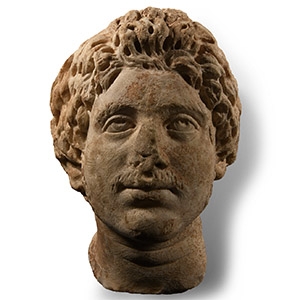
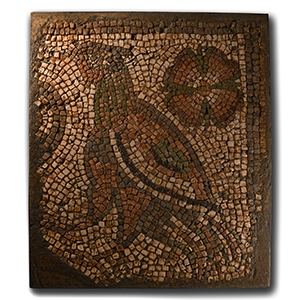
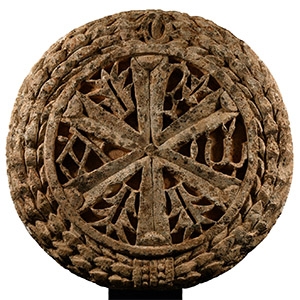


.jpg)


.jpg)
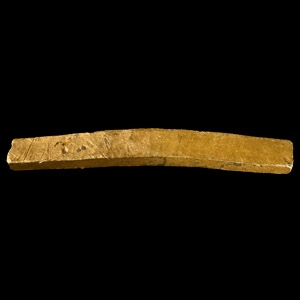
.jpg)
